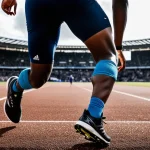Overlooked Financial Constraints in Niche UK Sports
Financial constraints present a significant barrier for athletes competing in niche sports across the UK. Unlike mainstream sports, where funding often comes from established governing bodies and extensive sponsorship, niche sports struggle with sporadic and limited resource allocation. This creates an environment where athletes frequently face inconsistent funding streams, restricting their ability to commit fully to training and attending competitions.
One of the core challenges is athlete sponsorship, which is far less accessible for individuals participating in less popular sports. Sponsors tend to prioritize high-visibility sports to maximize brand exposure, leaving niche athletes with scarce opportunities to secure financial backing. This scarcity directly impacts their performance potential, as inadequate funding forces them to self-finance equipment, travel, and coaching expenses.
Also to read : Can the Latest Innovations in UK Sports Really Transform Athletic Performance?
For example, many athletes in less recognized disciplines report having to juggle full-time employment alongside demanding training schedules. This dual responsibility strains their physical and mental capacity, making sustained athletic progress difficult. Moreover, the uncertainty about future funding can prevent athletes from planning long-term career development, often resulting in premature retirement.
Addressing these overlooked financial hurdles requires targeted strategies that ensure more equitable funding challenges are met with tailored support structures. Enhancing visibility and top-level investment in niche sports can bridge gaps and enable athletes to focus on excellence rather than financial survival.
Also to see : What are the environmental sustainability practices in UK sports venues?
Overlooked Financial Constraints in Niche UK Sports
Financial challenges in niche sports extend well beyond sporadic funding. The fundamental issue lies in limited and unpredictable resource allocation, which creates an unstable financial environment for athletes. Access to athlete sponsorship remains scarce, as brands typically favor high-profile sports to obtain greater visibility. This preference means athletes in less popular disciplines rarely secure the consistent backing needed to cover essential costs like specialized equipment, travel to competitions, and expert coaching.
When asked why funding in niche sports remains so constrained, the answer points to commercial appeal. Sponsors prioritize sports with broad audiences, resulting in fewer investments for niche sports that lack mass exposure. Consequently, many athletes encounter funding challenges that compel them to self-fund critical aspects of their careers or balance full-time jobs alongside training. This situation not only strains their capacity to perform at peak levels but also limits opportunities to participate in crucial competitions, impeding athletic development.
Real-world examples illustrate these hurdles. Athletes in disciplines such as fencing, archery, or synchronized swimming report inconsistent sponsorships that fail to cover travel or equipment upgrades, effectively stalling progression. Some resort to community fundraising or personal loans, highlighting the inadequacy of existing financial support. Without targeted solutions addressing these funding challenges, niche athletes remain marginalized, trapped in a cycle where resource scarcity restricts performance and diminishes opportunities for advancement.
Overlooked Financial Constraints in Niche UK Sports
Limited access to athlete sponsorship remains a critical obstacle for competitors in niche sports. Sponsors tend to allocate funds where visibility and audience engagement are highest, significantly reducing opportunities for less mainstream disciplines. This imbalance in resource allocation results not only in fewer sponsorship deals but also in inconsistent and often unpredictable funding streams. Athletes in niches frequently encounter difficulties securing stable financial support, directly impacting their ability to maintain rigorous training schedules and attend essential competitions.
The consequences of these funding challenges extend deeply into athletes’ careers. Without reliable sponsorship, many must self-fund costly necessities such as specialized gear, travel, and coaching. This financial strain often forces them to juggle employment alongside training, which can diminish performance and stunt competitive progression. For example, athletes in sports like fencing or archery report relying on personal fundraising initiatives or loans to meet basic expenses, highlighting the tenuous nature of their financial footing.
Moreover, the inconsistent nature of resource allocation means planning for long-term development is fraught with uncertainty. This unpredictability dissuades athletes from investing fully in their careers, as insufficient funds may abruptly end opportunities to compete or train abroad. In sum, overcoming these financial barriers is critical to enabling niche sport athletes not only to participate but to thrive and reach their full potential.
Overlooked Financial Constraints in Niche UK Sports
Funding challenges in niche sports persist largely due to limited athlete sponsorship opportunities. Sponsorship in these less mainstream disciplines is scarce because brands prefer sports with wider audiences to maximize exposure. This results in uneven resource allocation, where athletes in niche sports receive inconsistent and insufficient financial backing.
These unpredictable funding streams create significant barriers. Without steady support, athletes often struggle to afford essential expenses such as specialized equipment, travel costs for competitions, and professional coaching. The scarcity of sponsorship can force them into self-funding or taking on additional employment, which detracts from training time and performance quality.
Real-life examples emphasize these financial hurdles. For instance, competitors in archery or fencing frequently rely on personal fundraising or loans to cover critical costs, underlining the precarious financial situation for many niche sport athletes. The lack of consistent athlete sponsorship directly impacts their ability to compete at higher levels or pursue long-term athletic development, perpetuating cycles of financial instability within niche UK sports.
Overlooked Financial Constraints in Niche UK Sports
Limited access to consistent athlete sponsorship compounds the financial struggles in niche sports. Since sponsors emphasize visibility, athletes in less mainstream disciplines face sporadic and often insufficient funding streams. This unstable resource allocation forces many to self-fund essential costs such as training equipment and travel to competitions.
In addition, the unpredictable nature of sponsorship deals poses a significant challenge for long-term planning. Athletes cannot reliably anticipate funding months in advance, which disrupts their ability to commit fully to rigorous training regimes or participate in key events. The inconsistency aggravates funding challenges, creating a cycle where athletes must divert time and energy to securing finances rather than focusing solely on performance.
Real-life examples highlight these issues. For instance, archers and fencers frequently report relying on community fundraising or personal loans to cover necessary expenses. These financial hurdles not only strain their resources but also impact morale, limiting opportunities to advance competitively. Without improvements in resource allocation and more dedicated athlete sponsorship, athletes in niche sports face ongoing barriers that could otherwise be mitigated through targeted financial support.
Overlooked Financial Constraints in Niche UK Sports
Athletes in niche sports often face substantial funding challenges due to limited athlete sponsorship options. Sponsorship opportunities tend to concentrate on sports with large audiences, meaning competitors in less popular disciplines struggle to attract consistent financial backing. This uneven resource allocation creates an unstable funding environment where athletes must frequently manage irregular income streams.
How does limited sponsorship affect niche athletes’ training and competition schedules? Without reliable funding, athletes struggle to afford crucial elements such as advanced equipment, travel expenses for competitions, and specialised coaching. These costs are integral to maintaining competitive standards but often fall outside athletes’ personal financial means. As a result, many are forced to self-fund or take on additional employment, thereby reducing time and energy available for training.
What are specific examples of these financial hurdles faced by niche sport athletes? In disciplines like archery or fencing, athletes frequently report needing to organise community fundraising or personal loans just to cover basic competition costs. This financial strain impedes their ability to participate consistently in high-level events, limiting exposure and progression opportunities. The fluctuating nature of sponsorship also undermines long-term planning, leaving athletes uncertain about their career trajectory.
In summary, the persistent scarcity and unpredictability of athlete sponsorship lead to ongoing funding challenges in niche sports, which restrict athletes’ capacity to train, compete, and develop. Improving equitable resource allocation is essential to alleviate these barriers and foster athletic growth within underserved sporting communities.






